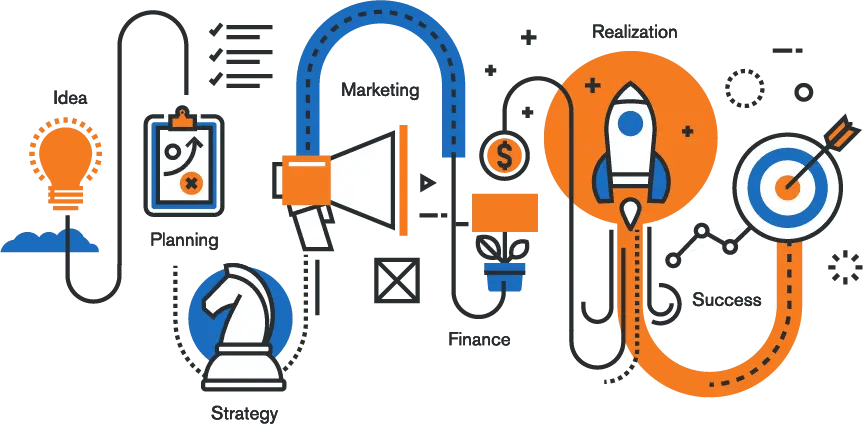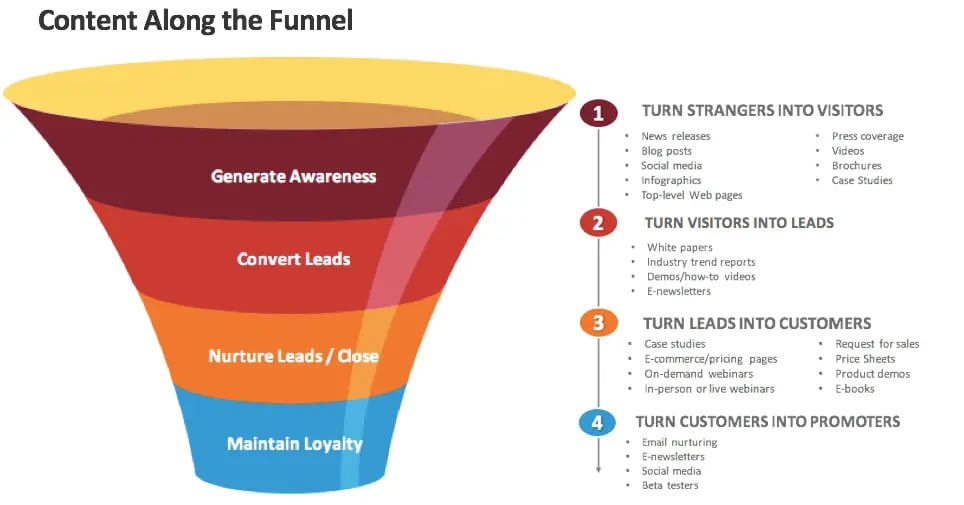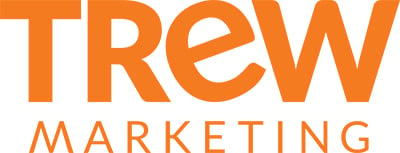SMART PRODUCT LAUNCHES FOR ENGINEERS
A Guided Process to Position Your Product for Success

Introduction
When it comes to total number of video game consoles ever sold, Nintendo is the reigning champion by leaps and bounds.
Nobody – not Sony, not Microsoft – even comes close.
Yet even this seemingly untouchable company with more than 100 years of experience has failed spectacularly when it comes to product launches. Ever heard of the Wii U of 2012? Following the footsteps of the wildly successful Wii game console, the Wii U managed to sell a paltry 13.5 million units compared to its predecessor’s 100 million units. What made the Wii U such a spectacular flop? Bad product launch. Let’s take a closer look:
The #1 reason why the Wii U bombed was because most people mistakenly thought the Wii U was an expansion or add-on accessory to the Wii, not a brand new console. The Wii U looked the same as the Wii, used the same Wii controllers, and even had the same name. Nintendo neglected to properly educate consumers about the true significance of the Wii U and its new tablet-like GamePad controller.
Shigeru Miyamoto, Representative Director of Nintendo, later said, “I feel like people never really understood the concept behind Wii U and what we were trying to do.”
Five years later, the company got another chance to prove itself once again with the launch of the Nintendo Switch in 2017. New name and new concept (not trying to copy its predecessor), a killer launch title, and tons of ads and trailers demonstrating its differentiation.
"We worked hard for the Nintendo Switch to make it crystal clear what the proposition is. It's a home system that you can take on the go, play anywhere with anyone, and that's resonating," said Reggie Fils-Aimé, the president of Nintendo America.
It looks like their hard work paid off – the Switch sold more units in its first year of release than the Wii U sold in its entire lifetime.
Avoid Becoming a Product Launch Cautionary Tale
No one wants to repeat the story of the Wii U, so how do you launch a Switch instead? Unfortunately, though marketing tactics and channels have evolved, the success rate of new product introductions has improved little over the past 20 years. According to Booz & Company, 66% of new products fail within two years. The Doblin Group goes even further by saying that 96 % of all innovations fail to return their cost of capital.
Successful product launches often look easy in retrospect when they actually require a phenomenal amount of effort and planning — and you usually don't read about the many failures.”
– Rob Adams in If You Build It Will They Come: Three Steps to Test and Validate Any Market Opportunity
This guide is written specifically for the business owner, product manager, and marketing leader preparing to launch a product targeted to technical audiences in the B2B space. It describes the steps for a successful B2B product launch.
First, we’ll take you through the critical planning and positioning phase in which you’ll create your launch plan by identifying your target audiences and defining your goals for the launch.
Then, we’ll review the process of how to position your product in the marketplace, ensuring it is clearly differentiated from your competitors.
In the final section of this guide, we’ll help you define the mix of marketing tools that will best help you meet your objectives and example timelines to achieve them. We’ll offer some examples of clients we have worked with and how their diverse goals and mix of marketing activities effectively helped them achieve success.

Phase I
Lay the Product Launch Foundation
According to the Fast Company magazine, “developing a new product in a new category is a formidable task, but actually launching the product when it's ready for the market can also be one of the most stressful times for a business owner.” In this section, we will try to alleviate some of that stress by walking you through the process of creating a marketing plan to launch and support your product.
Remember back in the day when the company first started talking about developing this product? Most likely a team of directors, sales managers, R&D engineers, and other stakeholders got together to determine:
- Who will buy this product?
- Why will they buy it? What problem does it solve?
- How will our product be different and better than those of our competitors?
These questions get to the heart of where to start in the product launch marketing process – planning and positioning. Both of these steps are critical in preparing to launch a new product. In fact, Joan Schneider and Julie Hall wrote in the Harvard Business Journal that among the reasons many new products fail is a lack of preparation. “Companies are so focused on designing and manufacturing new products that they postpone the hard work of getting ready to market them until too late in the game.”
As engineers, you may have spent years and a great deal of resources developing what you consider is the perfect product, but if no one buys it, your company’s investment may as well be flushed down the drain. Therefore, you’ll need to develop goals for your product that are closely tied to the overall goals of your business in order to achieve long-term success for your company.
Questions to Answer Before Product Launch Planning
- What is the name of my product?
- What is the price of my product?
- How will my product be packaged and distributed?
- How will customers order my product?
- How will I support customers of my product, and is this support included in the sales price?
Once you have defined how this product will help your company achieve its business goals, it’s time to lay the foundation of the product launch plan. Rather than throwing your marketing dollars at the problem and hoping something sticks, we need to be very strategic and focused with our time and resources. That means determining:
- Who are your target audiences?
- What goals and measurable objectives do you have the launch?
Identify Target Audiences
Who are your ideal customers? What jobs do they hold, where do they live, and what application challenges are they trying to solve? By answering these questions, you’ll define your target audience and specific personas, which are segments of your target audience defined by titles, circumstances, or needs. With personas, you can put faces to your customer segments and have the ability to better customize your marketing efforts – from messaging to activity selection – and make a greater impact with your prospects.
Next, move beyond potential customers and identify additional audience groups who will help you carry your message to the market. These may include technology and channel partners, media, bloggers, and other industry pundits. In Phase III, we will discuss partner co-marketing and public relations in more detail.
Determine Marketing Goals and Measurable Objectives
Once you’ve defined your target audiences, the next step is to establish your product launch marketing goals and define how you will measure success through the launch. Some goals may not be directly tied to a particular audience, while others are. For example, an overall goal might be to effectively establish the new product in the market and begin to build awareness. On the other hand, a more specific audience-based goal might be targeted at existing customers to make them aware of your product and how it works with your existing products in hopes of upselling them to drive expanded sales.
Examples of product launch marketing goals:
- Clearly and effectively establish new product name, brand, and position
- Build awareness and credibility for the new product and the company
- Create immediate opportunities for sales, VAR, and distributor channels with existing customers
- Extend awareness and strengthen the product/company brand through partner co-marketing
- Execute a benefits-oriented launch that addresses the learn, try, and buy purchase phases
- Cross-sell new product to existing customer base
- Nurture leads with longer sales cycles, prime and prioritize for sales
- Hold launch event in specific geographic region or at top 5 key account(s)
Start by brainstorming the top 10 possible goals. This ensures you think broadly about the launch and what you want to achieve. Then, once you have your list of 10 product launch goals, narrow those down to your top three or four. This is not only a great process to get everyone aligned to what you will and will not set out to achieve with this launch, but we have found that having more than four goals can become overly complex, hard to track, and difficult to prioritize.
With your marketing goals now defined and prioritized, you now need to determine how you will measure progress to these goals. This is the time to set measurable objectives that can be quantitatively tracked.
Examples of measurable objectives:
- Secure [X] feature articles in target trade publications
- Drive [X] new visitors to the product web page
- Secure and publish [X] new customer testimonials
- Increase web visits by [X]% and time-on-site by [X]%
- Convert [X]% of website visits to leads
- Grow demo downloads by [X]%
- Create [X] new qualified sales opportunities
- Conduct email marketing outreach with [X]% open and [X]% click-through rates
- Grow engagement on key social media channels through [X] likes, [X] re-tweets, etc.
- Improve search engine rankings for target keywords from results page [X] to results page [Y]
In Phase III, we will show you how to identify the specific activities – by marketing channel – that should be prioritized in order to help you accomplish each of the goals and meet or exceed the measurable objectives detailed above.
In addition, Phase IV we will give examples of timelines to show how you can execute marketing activities over time and be fully prepared for your product launch.
Phase II
Define the Product Branding
With your product launch plan in place – your target audiences, goals, and measurable objectives defined – you are almost ready to execute and go to market. But, you still have one big step to complete before you write the news release headline, pick your keywords for SEO, or design your new webpage. You have to define your product’s brand:
- What will the visual identity of your product look like and how will it tie into the company brand?
- What feature will you lead with in your messaging and imagery?
- What are the application challenges that your product solves, and which of those will prospective customers find most compelling?
- How will you translate these challenges into benefits they can quickly understand and are compelled to know more about?
- Positioning statement
- Product description and key messages
- Visual identity
By answering these questions, and more, you will be well on your way to defining your product brand and executing your launch. The three key elements of this process are:
- Positioning statement
- Product description and key messages
- Visual identity
Create Internal Alignment with a Product Positioning Statement
To illustrate this process, we have included a product positioning example that we developed for Lab7 Systems, a software solutions provider for workflow management and data-intensive science, as it prepared to launch its new Lab7 Enterprise Science Platform (ESP). In this example, the Lab7 team defined their agreed-upon responses to the positioning questions posed above and, as a result, provided a roadmap for differentiating the product from others in the marketplace. These statements, once completed, formed the foundation of external marketing messaging, including the product website and collateral.
Lab7 ESP Positioning Statement
Who: Lab managers and their teams…
Where: In labs, where effectively managing increasing amounts of data is critical to success…
Why: Who need more than just sample management in the lab, and are looking for an efficient, reliable tool that can integrate with existing systems and methods to manage, process, and analyze data.
What: Lab7 ESP is a centralized lab data management platform that helps organizations and individual researchers track samples, process data, produce reports, and manage workflows and analysis pipelines – overall increasing sample throughput and freeing space for new opportunity in the lab.
How: We took a step back from traditional LIMS data management software and created an end-to-end platform that prioritizes a streamlined workflow, the ability to comply with any standards, and strong data provenance. Lab7 ESP handles data from the time it is collected, through processing, analysis, and reporting, and until the indefinite future when it will be queried years after laboratory studies are complete.
Unlike:
- Traditional tools like LIMS, which doesn’t handle analysis
- Excel, which is difficult to scale
- Closed, black box systems that don't integrate and are difficult to troubleshoot
Develop External Messaging with the Product Pitch
After defining your product positioning, you also need to create your launch messaging, which provides the basis for messaging engagement with all customers and content development – from basic presentations to trade shows, to white papers, news releases, and web content. This external messaging can include the following components:
- Product name and model number (if applicable)
- Position descriptor: short tagline or catchphrase for the product (3-6 words)
- Product pitch: short descriptive paragraph (less than 100 words) based on the product positioning statement
- Differentiation pillars: messaging about key characteristics that uniquely set the product apart
- Segment messages: product pitches aimed at specific target audiences
- Quotes from customers or internal sources
Continuing with the Lab7 ESP product launch as an example, the following product pitch summarizes the product positioning and was used as the foundation for external marketing materials. Also included is hone of the differentiation pillars used to illustrate a key benefit of the software and supporting features for real-world applications.
Lab7 ESP Product Pitch
Product Name: Lab7 ESP
Position Descriptor: Lab data management and analysis platform
Product Description: Lab7 ESP takes labs from isolated practices to an integrated process, unifying lab informatics and prioritizing data provenance for the entire organization. The transparent platform provides users access to all information, reducing data and process redundancies and ambiguities. With Lab7 ESP, we didn’t reinvent lab management or scientific analysis – we just developed a tool to make them easier and more efficient for your team.
Differentiation Pillar: Reporting and Analysis – More than a traditional LIMS system, Lab7 ESP is built for pipeline analysis in addition to data and process management.
- Customized reports for different stakeholders
- Ability to produce reports now, or recall data later for further study
- Tight integration with existing analysis system
Define the Visual Identity
The final step is creating the visual elements of the product. These elements may include a unique product logo or custom graphics to help you brand the product in the marketplace. Color choices and typographic font selection for the product logo should be consistent with your company color palette and standard font. With the personas, product positioning, messaging, color palette and font selection defined, a graphic designer will have much of what he or she needs to begin developing concepts that are both aligned to your company brand and unique and compelling to your target audiences.
This product branding document – with your positioning statement, key messaging, and identity – will serve as the foundation for the marketing collateral you provide to your sales team, product presentations for potential customers, and product web pages. It will also feed into your content marketing efforts as well by providing a set of key messages that can be reinforced across digital marketing channels.
Now, you are ready to determine the marketing activity mix you’ll use to execute your product launch and achieve – or exceed – your objectives!
Phase III
Determine the Marketing Mix
In the planning section, we talked about the importance of prioritizing goals and setting measurable objectives to ensure you get the greatest return and have a successful product launch without overspending dollars or wasting time. To support these prioritized goals and quantifiable objectives, you’ll need to determine what marketing activities you will use. Determining the marketing mix to support your product launch will be a collaborative process, and will take several iterations. Here are some important considerations during this phase:
- Resources (budget and people)
- Timeframe
- Size of addressable market
- Existing content and marketing infrastructure
- Competitive marketing presence
- Partner co-marketing opportunities
By defining your budget, resources, and critical needs and opportunities from this list above, you will have the information you need to begin prioritizing your marketing launch activities.
Your first priority will be to identify and create most, if not all, of the key foundational elements you’ll use during the product launch. These include:
- Web presence: a place to direct all traffic from other media channels
- Datasheet: key technical overview and resource
- Customer quote or case study: real-world examples that build credibility
- Overview video: a combination of the collateral, customer examples, and demo in video format
- Product demo: a demonstration for prospects who want to see how it works (optional – can come later if resources are limited)
Once these fundamental content elements are in place, you are ready to determine the best mix of marketing channels to drive awareness and generate demand for your product.
These channels may include:
Strategically Target Different Stages of the Marketing Funnel
In the planning section, we introduced the importance of setting goals and objectives before deciding which marketing channels to use. At TREW, we believe the best way to approach this is not to do what you’ve always done (e.g., go to the same trade show, run a new ad in the same magazine, email your database, update your paid-search ad campaigns). This tactic is tempting because it’s easy and familiar. While your typical approach may be full of viable activities, you have a much better chance of using your limited dollars and resources in the best possible way for the greatest return if you look at the marketing channels with an open mind, and select the channels that will help you best achieve your objectives and, in turn, your goals for the product launch.

To strategically select the best marketing channels for your product, let’s consider the marketing funnel, or lead conversion funnel. This concept is a simple visualization of how prospects or leads interact with your company, converting from an unknown website visitor to a new, first-time customer. Technical audiences at the top of the funnel are in the “awareness” stage and generally know nothing about your business or product offerings. Whereas leads at the bottom of the funnel have already done a lot of research and are at the “ready-to-purchase” stage but just need that final push to say yes.
So, if your goal is primarily to generate awareness and drive new visitors to your site, you’ll want to focus on “top of the funnel” activities, such as PR, search advertising, SEO and content marketing… and yes, maybe that trade show or ad campaign you’ve always done. In contrast, if your goal is cross-selling a new product to your existing customer base, you will be better served with “middle/bottom of the funnel” activities, such as direct email marketing and webcasts.
Download the complete guide to see three real life examples of how the marketing mix can vary by company.
Phase IV
Create the Product Launch Timeline
Once you’ve determined the best marketing mix for your product launch, it helps to put those activities on a timeline. Product launches often require months of advance preparation, so these timelines are critical to ensuring you stay on track. You should have an over-arching product launch marketing timeline – e.g., a birds-eyes view of activities that are dependent on one another. Additionally, for major projects such as a PR launch or website redesign, you may have separate, detailed timelines.
To see examples of each type of activity timeline, download the complete guide.
Ideally you’ll have six months or more to prepare and develop all the necessary content for launch day. However, if you’re limited on time and have a much tighter schedule, downsize to a mini-launch with the bare minimum deliverables:
- Brand positioning and messaging
- Key imagery
- Website updates
- Sales slide deck
- Email marketing, blog posts, and/or social media
Most of this content is high-level and aimed at top-of-the-funnel prospects, so after the launch, plan to spend time creating meatier pieces for middle- to bottom-of-the-funnel audiences. This may include a datasheet, case study, white paper, webinar, and partner co-marketing.
Finally, measurement is a critical aspect of your product launch. It was important in the planning phase to agree on your top three to four goals and define the objectives you would measure to them.
Now, with your objectives clearly set and your end goals in mind, you just require discipline and accountability to ensure the roles and processes are in place to gather your launch results data (e.g., web traffic, lead conversion, sales feedback), analyze against objectives to ensure you’re on track, and make changes to the launch plan as needed to continue the momentum. With this effort, you will know if the dollars and time spent are delivering the return you expected, and that you are making effective progress toward achieving your goals.
Conclusion
Congratulations! You’ve made it to the end of our marketing guide to successful product launches. You’ve learned about the importance of product launches and how proper preparation and planning are critical when first introducing a product to the marketplace. You’ve also seen for yourself the wide variety of marketing channels companies use to build product awareness and generate demand.
According to Fast Company magazine, “marketers must face that their launch will be forever in beta, a state of continuous improvement that prevents the brand from losing momentum, or worse, stalling out. Studies confirm that marketers who assume their launch is over, who pull back, who stop innovating, or who let share of voice fall below their market share, do not fare well.”
So, don’t rest on your laurels – just because you’ve successfully launched your product does not mean your work is done. You’ll need to continually create new content, generate web traffic, and gain new leads and sales opportunities to sustain your sales and growth goals.





